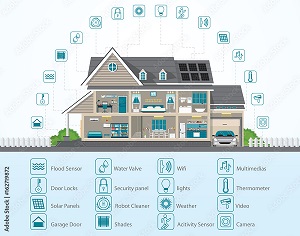- The advent of smart irrigation and water management systems marks a significant shift from traditional agricultural practices, where farmers often resorted to flooding their fields or relied on intuition to determine watering needs. With the integration of Internet of Things (IoT) technologies, such as soil moisture sensors and automated drip irrigation systems, water is delivered precisely when necessary, thereby minimizing waste and enhancing crop yields. For instance, in regions susceptible to drought, such as Maharashtra and Rajasthan, the implementation of IoT-driven irrigation solutions has demonstrated the potential to conserve water by as much as 50%. This innovative approach not only addresses the pressing issue of water scarcity but also optimizes agricultural productivity, showcasing the transformative impact of technology in farming practices.

2. Precision farming represents another critical advancement facilitated by IoT technologies, moving away from the conventional one-size-fits-all methodology for applying fertilizers, pesticides, and sowing techniques. By utilizing an array of sensors, drones, and GPS-enabled devices, farmers can gather real-time data regarding soil health, crop development, and nutrient levels. This data-driven approach allows for the precise application of agricultural inputs at optimal times, resulting in increased productivity while simultaneously reducing costs. The ability to tailor farming practices to specific conditions not only enhances efficiency but also contributes to sustainable agricultural practices, ultimately benefiting both farmers and the environment.
3. In the realm of weather forecasting and climate monitoring, traditional methods often left farmers at the mercy of unpredictable weather patterns, relying on guesswork or outdated radio broadcasts for critical information. The introduction of localized weather stations and IoT sensors has revolutionized this aspect of agriculture by providing accurate forecasts related to rainfall, temperature, and humidity. With access to timely and precise weather data, farmers can take proactive measures to safeguard their crops against unforeseen weather events such as sudden rain, frost, or heat waves. This capability not only protects their investments but also enhances overall crop resilience in the face of climate variability.
4. The utilization of drones and smart machinery further exemplifies the integration of technology in modern agriculture. Drones are employed to monitor extensive fields, administer pesticide applications, and gather vital data on crop health, thereby streamlining various farming operations. Additionally, the advent of automated tractors and harvesters significantly reduces the reliance on manual labor, allowing for more efficient and cost-effective farming practices. The cumulative benefits of IoT in Indian agriculture are substantial, with reports indicating a potential 20–30% increase in crop yields, 40–50% savings in water usage, lower input costs for fertilizers and pesticides, diminished post-harvest losses